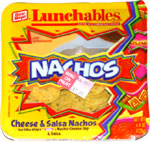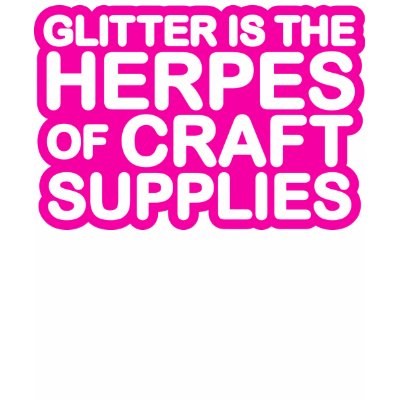 Who wouldn't get in line to purchase overpriced footwear once associated with skinheads and gangs of the 1960s and 70s? There's nothing like taking a ripe piece of subculture and mainstreaming it to the popular kids. How exactly the Doc Martens people ever convinced hordes of Abercrombie-wearing, gum-chewing, Backstreet Boy CD-purchasing teenyboppers that these grungy workboots were the height of cool is a mystery best left to professionals. There was clearly a force bigger than all of us urging all of these head cheerleaders and lacrosse team captains to beg their parents to shell out for these pricey shoes.
Who wouldn't get in line to purchase overpriced footwear once associated with skinheads and gangs of the 1960s and 70s? There's nothing like taking a ripe piece of subculture and mainstreaming it to the popular kids. How exactly the Doc Martens people ever convinced hordes of Abercrombie-wearing, gum-chewing, Backstreet Boy CD-purchasing teenyboppers that these grungy workboots were the height of cool is a mystery best left to professionals. There was clearly a force bigger than all of us urging all of these head cheerleaders and lacrosse team captains to beg their parents to shell out for these pricey shoes.It may be fair to theorize that the rise of Doc Martens fell somewhat in step with the rise of grunge culture, but it's also relatively safe to say that many of the middle schoolers sporting Doc Martens in the mid-90s didn't know Kurt Cobain from Adam. It would be easy to shove the blame for this trend onto a reputable cultural phenomenon, but the horrifying truth was that these clunky shoes had a following entirely separate from their initial 90s grunge roots. No, many of these kids actually had the gall to like these shoes on alleged merit alone. To many of us, there was nothing sexier than seeing a potential mate clomping around in a charming pair of 12-pound clunky rubber-soled boots or sandals.
Truthfully, Doc Martens' popularity crested at the point of contact between grunge chic and preppy Clueless-style fashion. Lost and confused, we were eager to fit in but perplexed by the wide range of wardrobe trends to which we could feasibly subscribe. Like a deer in the headlights, many were so blinded to fit in that they were willing to forsake principles in their fashion choices and don a mishmosh of incongruous trends. Thankfully, Doc Martens were also available in styles I like to refer to as "Doc Marten Lite." This set of equally cumbersome but less counter-culture-esque footwear included sandals, mary janes, and ordinary-model shoes in lieu of the more in-your-face, take-that-authority style boots. It was as if kids were saying, I like the idea of these badass shoes but I also am concerned about completing homework assignments in full and not arriving tardy to homeroom.
 In a time where name brands were king and no brand emblazonment was too brazen or tasteless, Doc Martens neatly filled a void in the shoe department with its easily recognizable signature stitching. The truly punk-rock or grunge among us liked these shoes for what they stood for, but the more shallower (read: the majority) of teens wore these because they were hopelessly lemming-like and wanted everyone to know exactly what brands they were sporting. There were countless imitation DMs on the market, but none of them could achieve that glorious undeserved sense of self-worth achieved by having a pair of shoes with thick yellow stitching just above the soles. Mainstream kids could breathe a sigh of relief that their yellow-stitched stompers would not go unnoticed.
In a time where name brands were king and no brand emblazonment was too brazen or tasteless, Doc Martens neatly filled a void in the shoe department with its easily recognizable signature stitching. The truly punk-rock or grunge among us liked these shoes for what they stood for, but the more shallower (read: the majority) of teens wore these because they were hopelessly lemming-like and wanted everyone to know exactly what brands they were sporting. There were countless imitation DMs on the market, but none of them could achieve that glorious undeserved sense of self-worth achieved by having a pair of shoes with thick yellow stitching just above the soles. Mainstream kids could breathe a sigh of relief that their yellow-stitched stompers would not go unnoticed.
These shoes weren't exactly cheap, either. Many of us were forced to deliver formal presentations to our parents convincing them of the merits of shelling out over a hundred bucks a pop for these babies*. Our in vogue classmates often had more than one pair so as to give their loud foot-stepping some visual variety, so parents came to know these shoes as a steep monetary endeavor. You could claim all you wanted that this was an investment and that you would wear them forever, but I challenge you to find more than a handful of 90s children who can recall the fate of their once-beloved Doc Martens.
Doc Martens weren't just iconic in the 90s for their presence, but for the inexplicable ways in which their bizarre trend was manifest on adolescent feet nationwide. One of the most curious exhibitions of Doc Martenry was the odddly sought-after socks-and-DM-sandals look. While just a few years ago we may have chastised our fathers on vacation for sporting a similar look to match their fanny pack and passport holder necklace, this look was suddenly all the rage. We're not just talking any socks here, either. No, the fashion-conscious knew it was specifically white socks--that is to say, those most closely tied to the dreaded tourist-father-with-straight-bill-baseball-cap look--that made you a genuine style maven.
While the shoes were certainly comfortable and functional (aside from the inevitable drag associated with carrying the equivalent of two-ton bricks on each foot), they could not remain in the fashion spotlight forever. Much to the I-told-you-so style castigations of our parents, so too did this trend eventually end up lost somewhere in the back of our closets next to the piles of plaid skorts and convenient 43-pocket cargo shorts. For those of you lucky enough to have preserved your shoes properly (if like me, your shoe store threw in a free tin of Doc Marten shoe shine balm!) there is still hope yet that these shoes will live to see another day outside the circle of gardeners and neo-Nazis who favor them today.
Quirky-styled supermodel Agyness Deyn has been seen all about town sporting these old standards, poising them for a comeback. For those of you who have been eagerly anticipating the second coming of these shoes (in your lifetime, at least), you may just be in luck.

Then again, she's also sporting white leggings, a sweater miniskirt, giant blue hair bow, and leather-and-shearling coat complete with multiple non-functional belts, so this trend may not quite be ready for the masses yet. Lucky for you, there may still be time for you yet to recover your old Docs.
But this time, let's lose the socks.
*Was this really just me? Because I must say I had some pretty penetrating pie charts.














